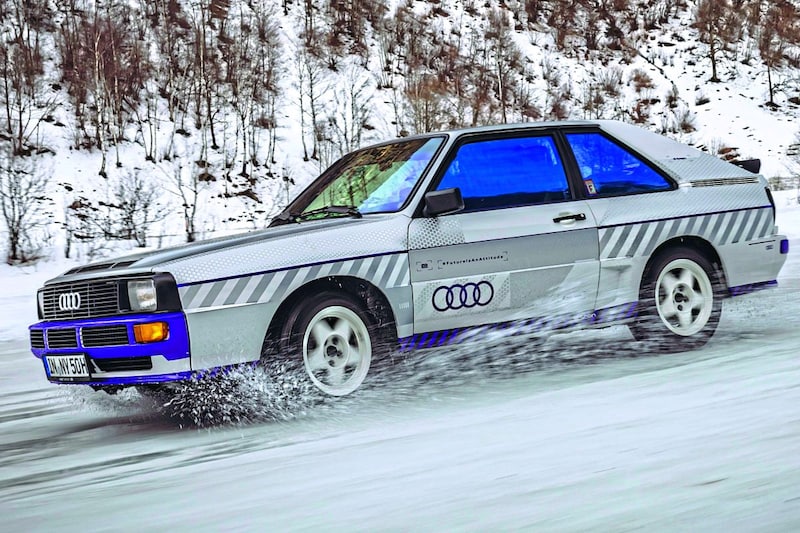
At the front an Audi 80, at the rear an Audi Coupé, considerably shortened in the middle: we are on thin ice with the Audi Sport Quattro.
No, there is no winner of the Monte Carlo Rally or another rally hero behind the wheel. Such as Walter Röhrl or Harald Demuth, two men who could even drive to the bakery at full throttle. No, for us an Audi Sport Quattro with a 306 hp five-cylinder, one of the 220 units ever built and now worth more than €500,000, is certainly not a piece of cake.
We’ve been invited to the 40th anniversary of the Sport Quattro, to a party that doesn’t require beer or other intoxicants – the birthday boy’s birthday is already intoxicating enough. Even if his outfit looks a bit silly. Our specimen is one of 48 alpine white specimens. Most are tornado red in color, 128 of them to be precise. Rarer than the white specimens are only those in Copenhagen blue (21) and malachite green (15); the two black Sport Quattros were intended for Audi chief Ferdinand Piëch.
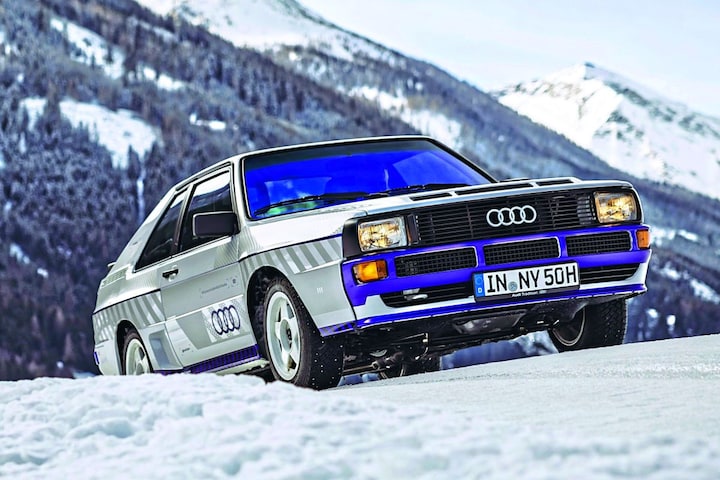
Covered in the style of the Audi S1 e-tron Quattro Hoonitron
So he is in fact white. The Audi employees have provided it with a foil with letters and slogans such as ‘E’ and ‘Future’ on it, so that the short electric Audi that they call the ‘S1 e-tron quattro Hoonitron’ has some of the glamor of the versions with a five-cylinder engine. We see it slightly differently, because in the car world, glitz and glamor always go hand in hand with a nice dose of noise. In short, we are going all out today and paying tribute to an automotive great for whom they should build a monument in Ingolstadt, so much has this car influenced the course of Audi. With its five cylinders, our Quattro sounds in the snowy Austrian Alps as if there is a trumpet quintet under the hood, and all our hair on the back of our necks and on our arms spontaneously moves.

In the meantime, we look back on 1984, a year in which rallying still enjoyed considerable popularity among the general public. This car was born in this year and the credo less is more certainly applies. It is considerably more agile than the original Quattro, thanks to the considerably shortened wheelbase of this 4.16 meter long car. Audi NSU Auto Union AG was very active in rallying in the early 1980s and appeared at the start of many rallies with the Oer-Quattro, both in the FIA world championship and beyond. But with a length of 4.40 meters, the model was very long; you noticed that when you were speeding through the forest at 200 km/h and suddenly a sharp bend approached. The Lancia Rally 037 (3.89 meters), the later Delta S4 (3.99 meters) and the Peugeot 205 T16 (3.72 meters) were shorter and therefore more agile on the rally roads of this world.
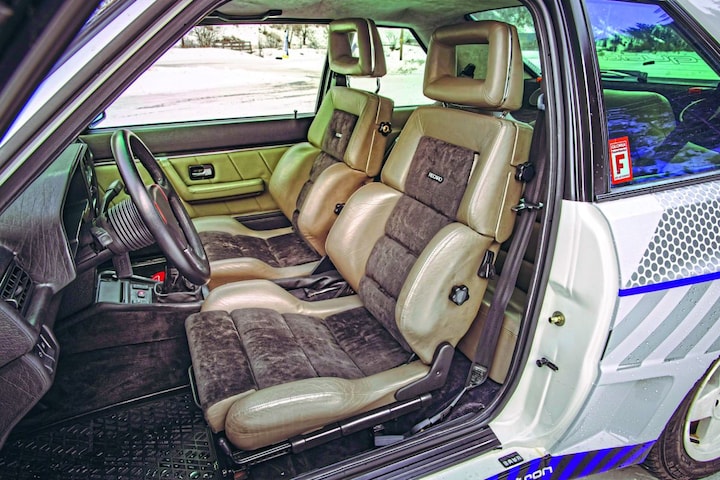
Sport Quattro built by Baur in Stuttgart
The solution was obvious: shorten it. If we say that the Audi employees put an angle grinder on the B-pillars, let the sparks fly and cut 24 centimeters of wealth from the coupe, that’s not entirely true. Firstly, the 214 copies (plus six prototypes) were not built at Audi, but at the Baur bodywork company in Stuttgart, using plastic parts from the Swiss Seger and Hoffmann. Second, you need to take a closer look at the windshield.
The windshield of the Sport Quattro is placed much steeper than the Oer-Quattro. In fact, the front comes from the Audi 80 and from the B-pillars it is a short coupe. Various conversion artists in Germany, Poland, but also in the Netherlands who have brought many ‘baby Quattros’ into the world, also claim to be able to put such a car on its wheels. A ‘Sport Quattro’ body kit will cost you €10,000 from those companies, a bodywork with windows and lighting is available from €45,000, and completely ready to drive you will spend at least €75,000.
214 copies built
In AutoWeek we keep it at 214 original copies. Ingolstadt actually only had to build 200 to meet the homologation requirements of the motorsport federation FIA, but a few more would still be added. Recently, Audi employees even unearthed a Sport Quattro body somewhere in the factory. By April 26, 1984, all Sport Quattros had been built and FIA requirements had been met. Shortly before that, German rally hero Walter Röhrl won the Rallye Monte-Carlo on January 27 in a long Quattro and finished second a year later in the new Sport Quattro S1.
Walter Röhrl: “Trained monkey can win with Quattro”
We ride on the closed course of www.winterfahrtraining. ate with temperatures slightly above freezing. The snow has partly turned into water, but in some places we slide on pure ice, very entertaining. Walter Röhrl regularly shows brave drivers on this course how much fun driving a car can be if you master it as much as he does. “You can put a trained monkey in a Quattro and he will win!”, the two-time world champion once said. Perhaps, but apes may not suffer from fear as much as we do today. So we just take it easy and try not to think about the value of this car. At the end of January, auction house RM Sotheby’s sold an alpine white Sport Quattro with 8,806 kilometers on the clock for €613,710. The Audi we’re driving today has only a little more on the odometer, 17,346 kilometers to be precise, and it feels like new.

It is certainly not a bargain, but do not expect the impeccable finish for which Audi would later become famous. Yes, its dashboard is made of grained plastic and we see high-quality carpet, even on the sides of the center console, and Alcantara above our heads. But right in front of us we see the plastic buttons from the volume models of the time, the brittle-feeling direction indicators from the Audi 80 and the ventilation controls from the Volkswagen Golf I. Recaro seats (with side bolsters in hunter green) with electric adjustment, a speedometer that runs continuously up to 300 km/h, a rev counter that runs up to 8,000 rpm and extra meters for water and oil temperature and oil pressure make the difference.
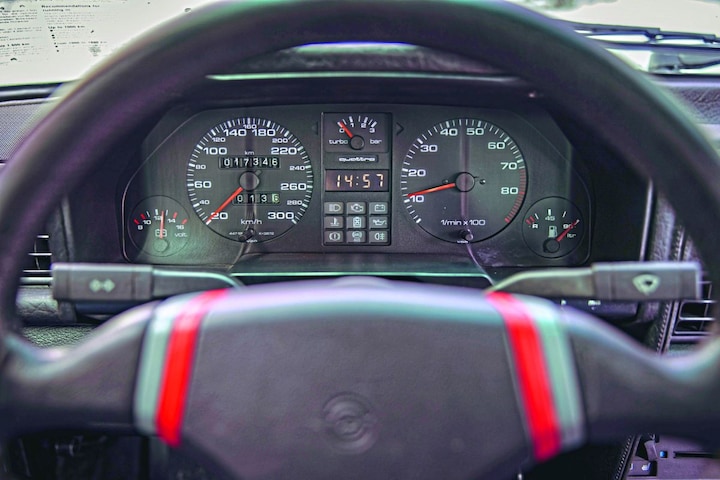
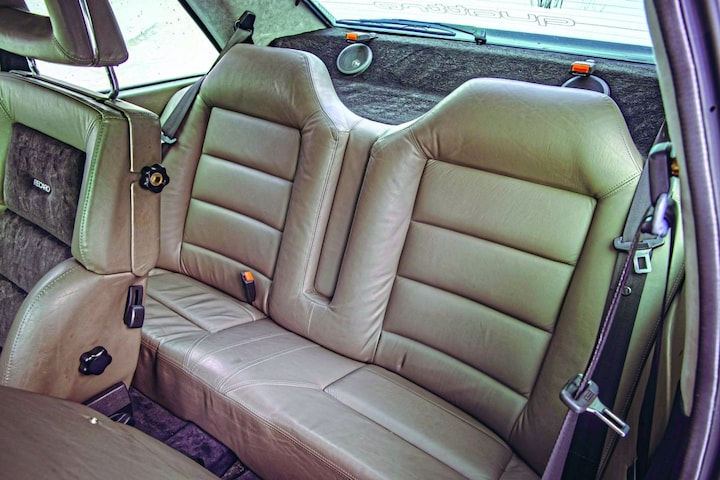
Sport Quattro designed to be slightly understeered
The engine is running, the heart rate increases, the foot on the accelerator becomes restless. The Quattro makes its way through the snow as if pulled along by a steel cable. We take the first corners at relatively low speed, out of respect for the car. At the apex of the fifth corner the confidence is there. We press the accelerator deeper, the Audi still drives as if it is on rails. The Sport Quattro is designed in such a way that it should be slightly understeered, or good-naturedly. To quote Walter Röhrl: “If you see the tree you hit, there was understeer. Just hearing that boom was upsetting.”
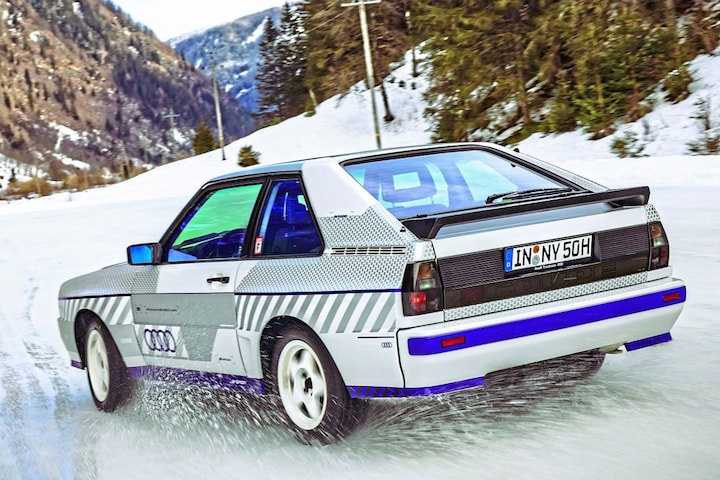
We want to oversteer, or get the rear end to the outside of the corner. To do that, we have to get the Quattro over the line, so we turn the wheel and hit the gas full throttle. The rear comes out, snow flies, then turn the steering wheel back a bit and press the accelerator. Then the Audi drives straight ahead stoically. Oh dear, that wasn’t the intention.
Winter sports with a short Quattro, that’s pure fun. How the rally monster heralded a different era for the brand with the four rings. Winning championships is one thing. Making the technology accessible to everyone is another matter. This way you always know when you sit in the passenger seat of an Audi and recognize the ‘quattro’ lettering: this car can do more than its driver. Ours could actually slow down quite quickly if the surface weren’t made of snow and ice. It is equipped with four-piston fixed brake calipers from motorsport and 28 millimeter thick ventilated brake discs. We can’t test them here because the surface is so slippery that it looks like they’ve smeared face cream on the ice.

150 hp per liter
We can therefore only guess what it feels like when all the power is released. It is a 2,133 cc turbo engine with four valves per cylinder. So a total of twenty valves, after all it has five cylinders. Motorcycle expert Dr. Fritz Indra once said: “An aluminum engine block was used to carry the extra weight of the head, the generously sized charge air cooler and the slightly larger turbo.” And he stated enthusiastically: “All measures deliver performance figures that were not recently considered possible for road car engines.” For example, a specific power of almost 150 hp per liter, which until then was only possible in motorsport.
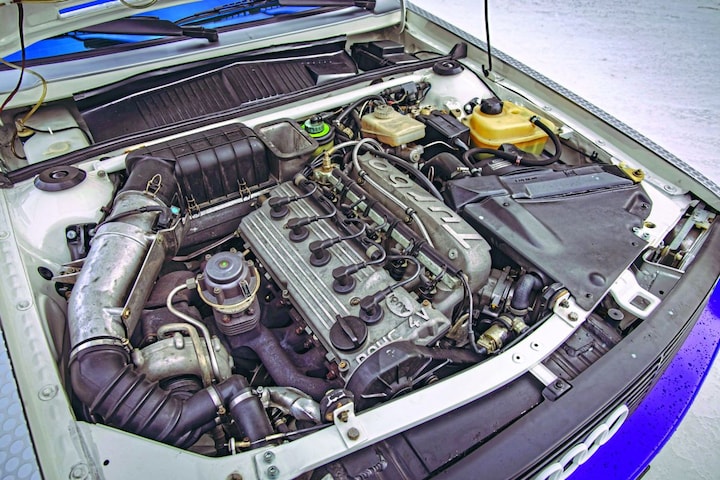
Ultimately, we don’t know what appeals to us most about the short Quattro. The four-wheel drive with its insane traction or the good-natured chassis that gives you the feeling that you have it under control, even though our driving skills are at the level of a trained monkey compared to those of the rally gods of the past. Or is it the sound of the five-cylinder engine that makes our hearts beat faster? It doesn’t really matter. Either way, you drive around with a smile from ear to ear. What a car!
– Thanks for information from Autoweek.nl